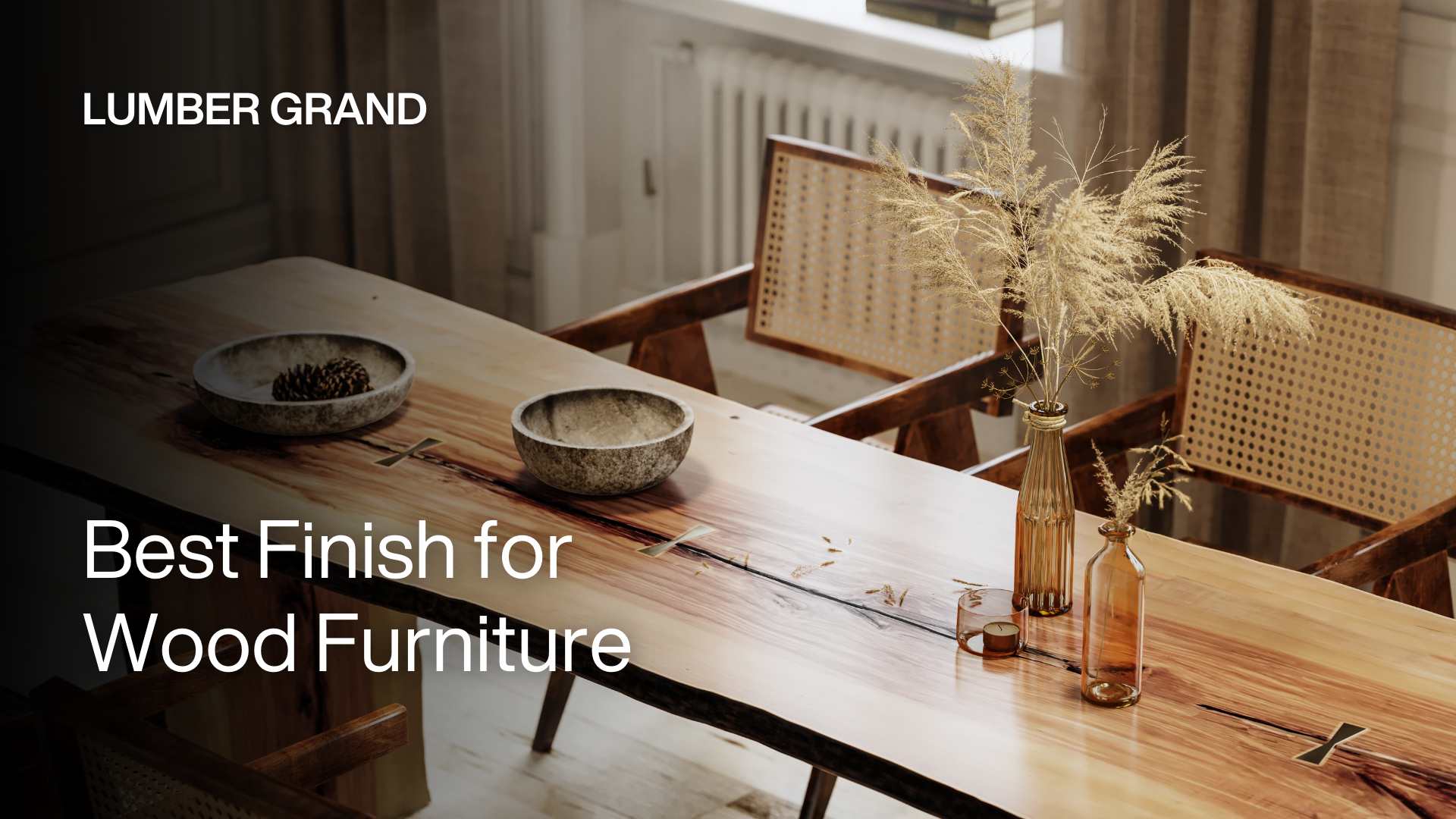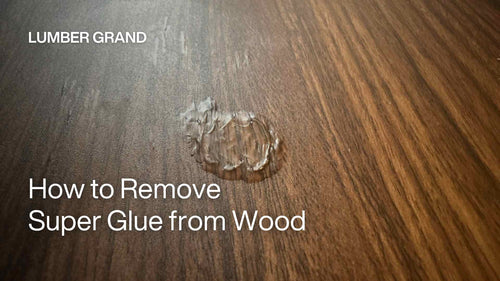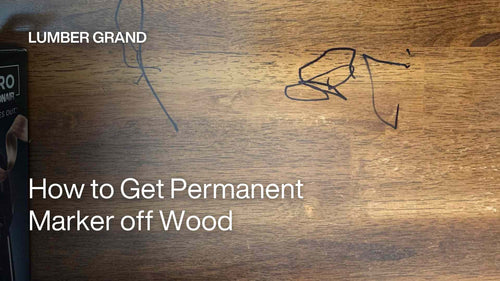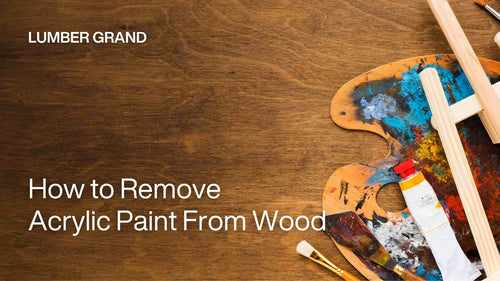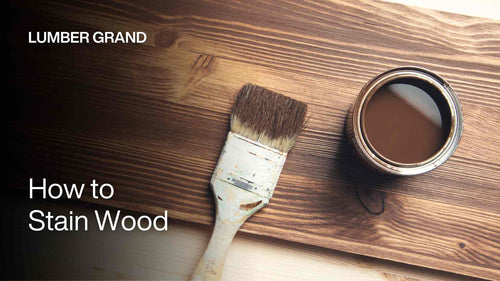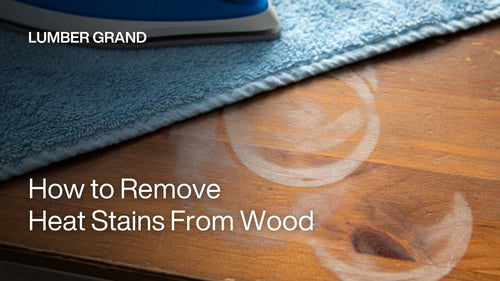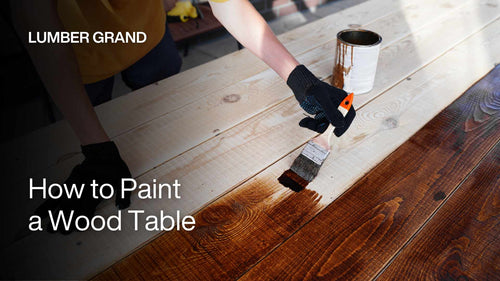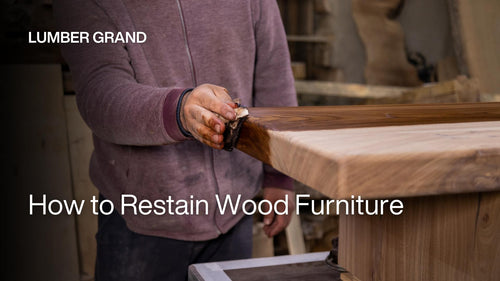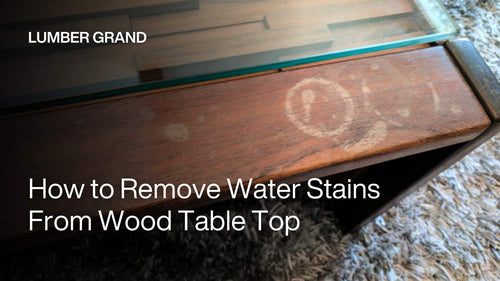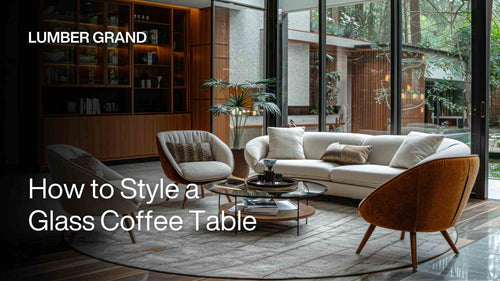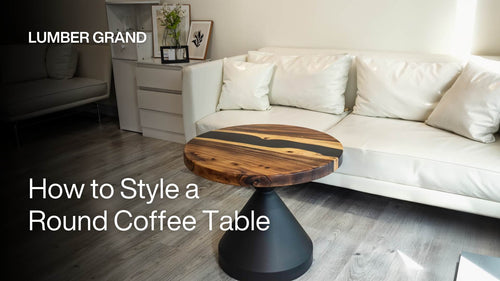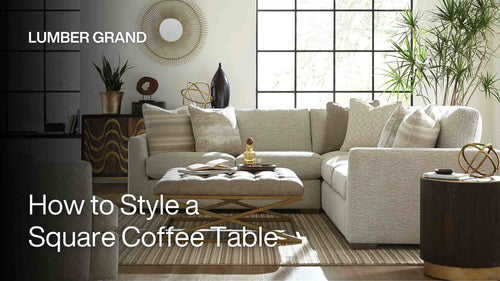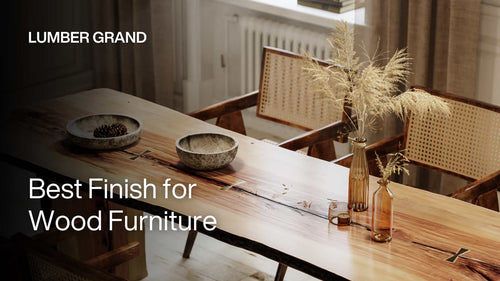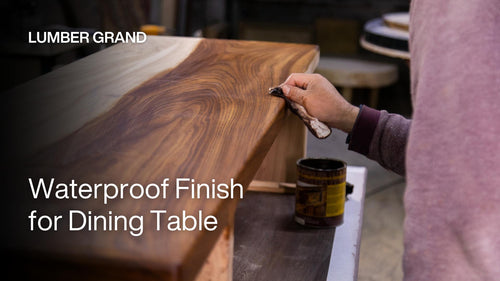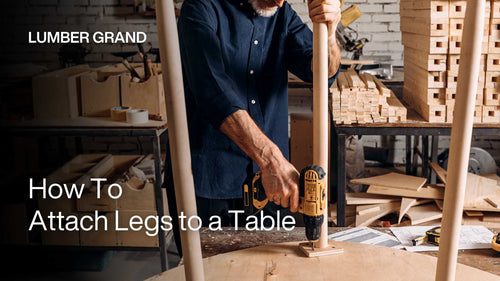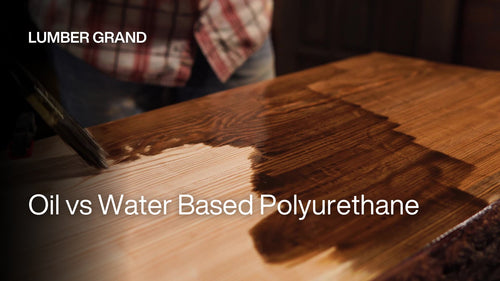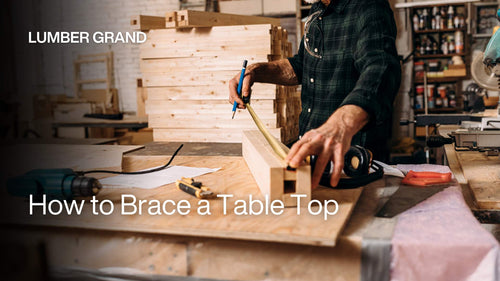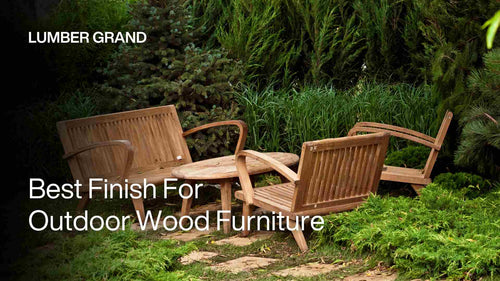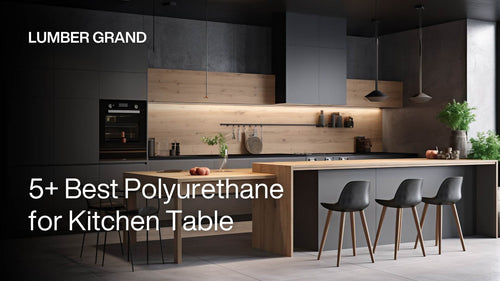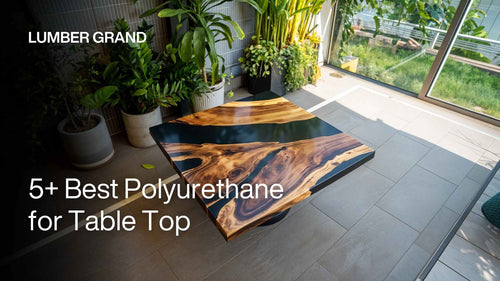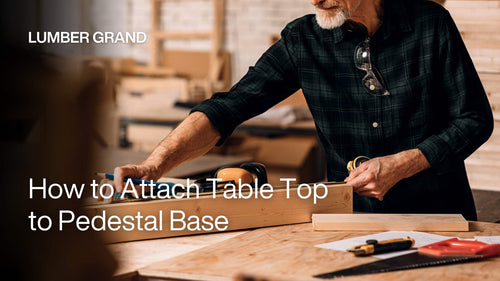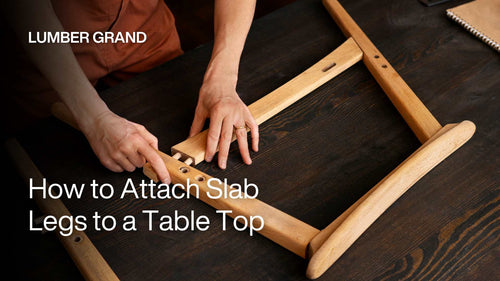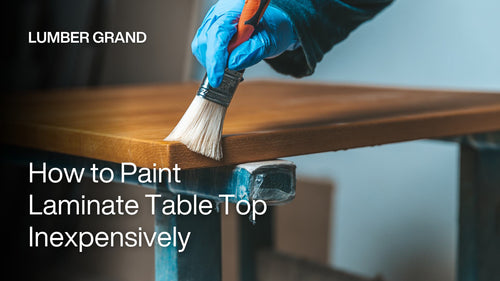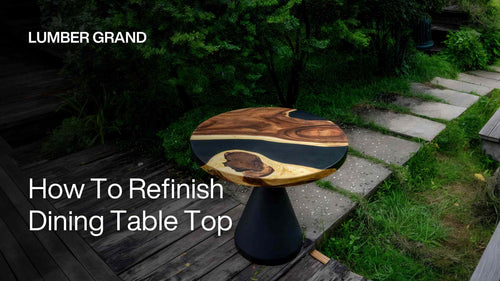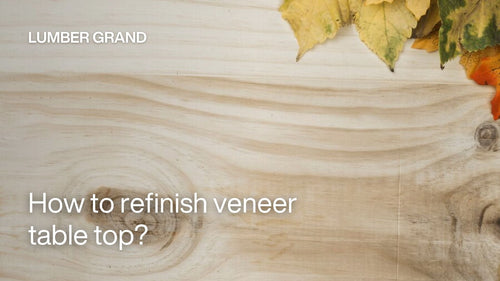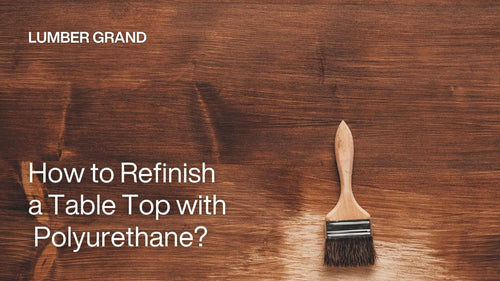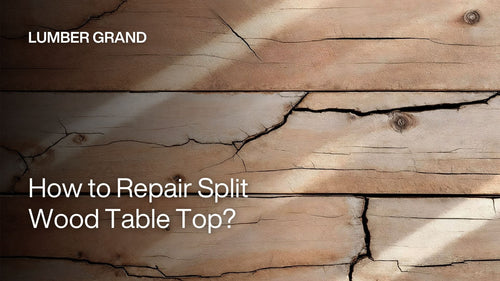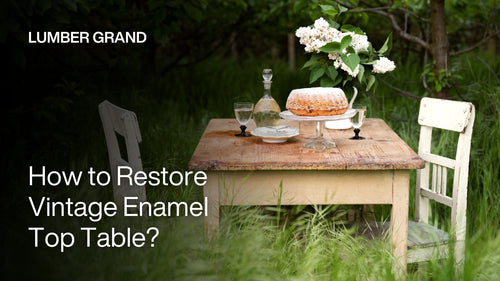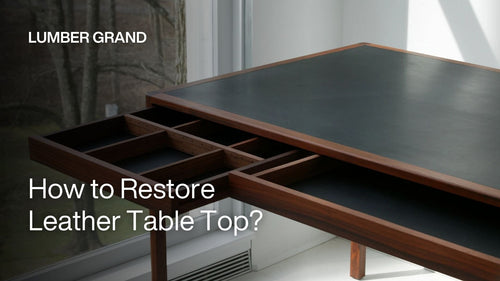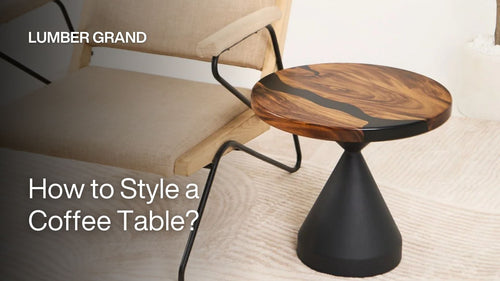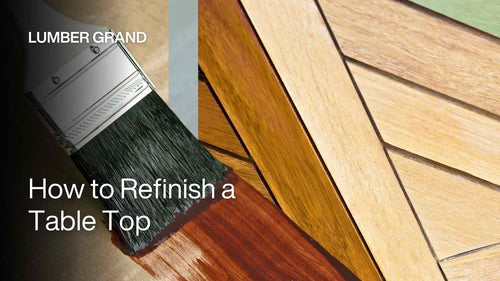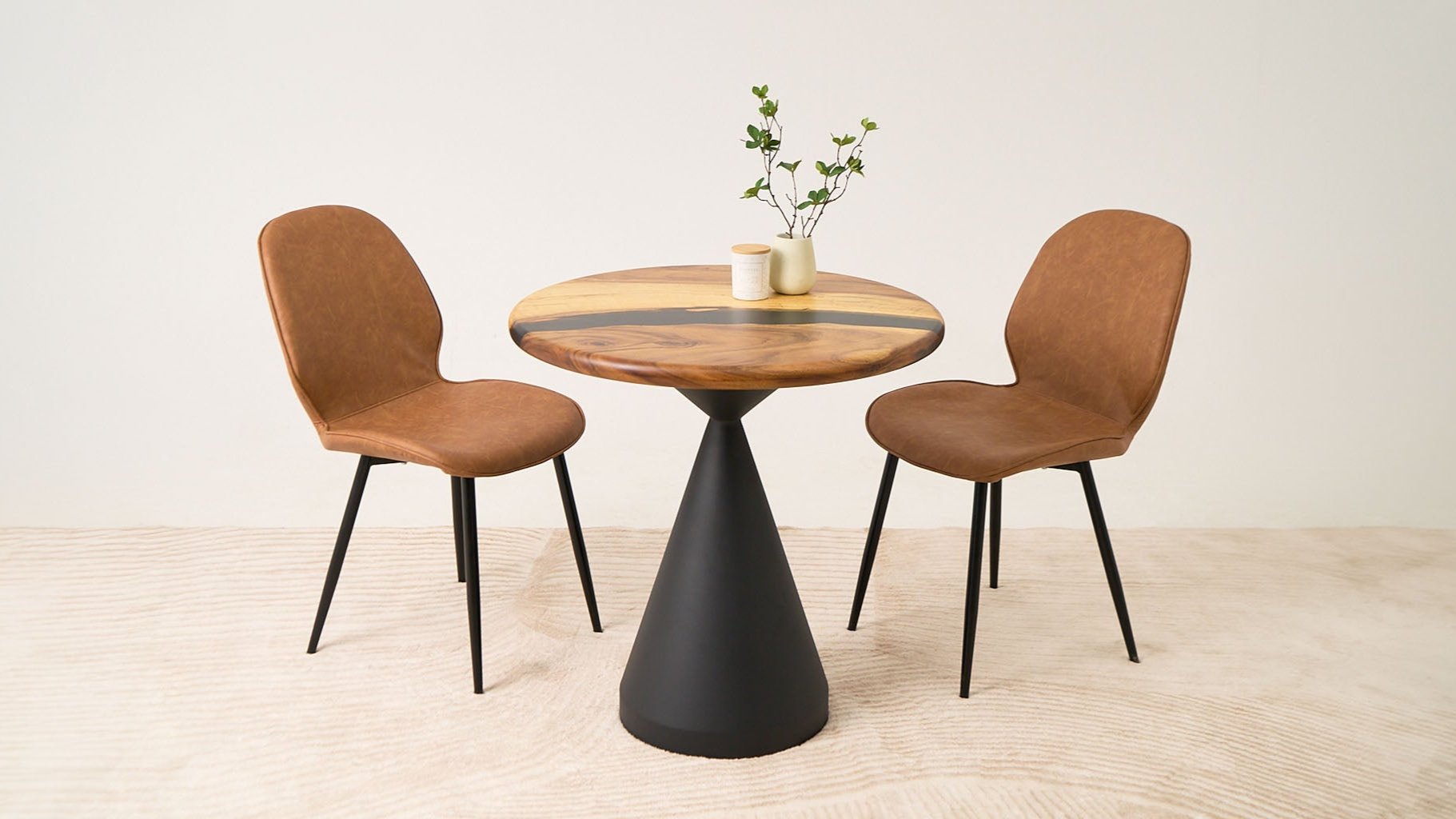Most people grab whatever's claims best finish for wood furniture at Home Depot. Then they wonder why their dining table shows water rings after 6 months or their coffee table looks cloudy and streaked.
The fact is professional woodworkers use completely different finishes than what you'll find in big box stores. While beginners struggle with brush marks using basic polyurethane, pros get flawless results with conversion varnish and lacquer systems that cost 3x more but last 10x longer.
This guide reveals the best wood finish for furniture from the oil based poly that dominates 60% of Reddit discussions to the conversion varnish found in luxury restaurants. You'll see durability rankings, real-world costs, and which finishes work for your skill level. Read more!
Best Finish for Wood Furniture: A Quick Comparison Table
Lumber Grand put together this comparison table so you can see how all 7 wood finishes compare side by side. You'll get the real differences in durability, application methods, and costs without any marketing fluff.
Take a look at the table below to find which finish makes sense for your project and skill level. After that, we break down each finish with the honest pros and cons you won't find in other guides.
|
Finish Type |
Durability |
Application |
Recoat Time |
Coats Required |
Cost Range |
VOC Level |
|
Conversion Varnish |
7 — 12 years |
Spray gun only |
4 — 8 hours |
2 — 3 coats |
$40 — 80/gallon |
Moderate |
|
Oil-Based Polyurethane |
8 — 10 years |
Brush/roller/spray |
8 — 24 hours |
2 — 3 coats |
$15 — 25/quart |
High |
|
Lacquer |
5 — 8 years |
Spray gun |
0.5 — 2 hours |
3 — 5 coats |
$25 — 40/gallon |
High (lower for water-based) |
|
Water-Based Polyurethane |
5 — 7 years |
Brush/roller/spray |
4 — 6 hours |
3 — 4 coats |
$20 — 35/quart |
Low |
|
Danish Oil/Wiping Varnish |
2 — 4 years |
Wipe-on with cloth |
8 — 12 hours |
3 — 5 coats |
$15 — 25/quart |
Moderate |
|
Shellac |
1 — 3 years |
Brush or French polish |
1 — 2 hours |
3 — 4 coats |
$15 — 25/quart |
Low (alcohol-based) |
|
Natural Oils (Tung/Linseed) |
3 — 5 years |
Hand rubbing |
24 — 48 hours |
Multiple maintenance coats |
$20 — 40/quart |
Zero |
Best Finish for Wood Furniture From High to Low Durability
To choose the best finish for wood furniture, you should understand all the types of wood finishes and how to apply them correctly. Let’s take a closer look to see what they’re made of, where they shine, and what to watch out for.
1. Conversion Varnish: Top Pro Wood Finish for High-End Furniture
Conversion varnish (Two-Component) is one of the best finishes for wood furniture because it's incredibly tough and lasts almost forever. These two-part systems cost more and take more skill to apply, but they deliver durability that regular finishes simply can't match.
Professional shops love how fast these finishes build up thickness. You can get great coverage quickly, which saves time on big projects. The performance blows standard lacquer out of the water.

Conversion varnish serves high-performance applications on wood furniture
Photo: iStock
You'll be surprised when the conversion varnish cures. Most finishes just dry on the surface, but this one actually changes chemically. The molecules link together and form an extremely hard coating that bonds to your wood.
Regular finishes are like putting tape on your table. Conversion varnish becomes part of the wood surface through chemistry. You end up with a finish that's much harder and more resistant to damage than anything you can buy at the hardware store.
Conversion Varnish overview:
-
Pros: Maximum durability, chemical resistance, builds thickness quickly
-
Cons: Complex mixing, limited pot life, professional application required
-
Popular brands: ML Campbell, Gemini Coatings
-
Recommended use: Restaurant tables, hospital furniture, luxury cabinetry
-
Market Position: High-end professional niche market
Learn more about conversion varnish at: Waterproof Finish for Dining Table
2. Oil-based Polyurethane: Best Finish for Wood Furniture High-Traffic Indoor
Oil-based polyurethane is the favorite finish for people who do their own woodworking. Walk into any Home Depot or Lowe's and you'll see why these product flies off the shelves.
Most finishing experts tell beginners to start with satin oil-based polyurethane. You can find it everywhere, and the forgiving application properties mean you won't ruin your project on the first try.

Experts often recommend satin oil-based polyurethane as the best finish for wood furniture for beginners
Photo: Freepik
Oil-based poly works great on dining tables, desks, and high-touch furniture where you need something tough. Sure, it takes longer to dry than some other finishes, but most DIYers don't mind waiting for better results.
A quart costs about $15 to $25, which is pretty reasonable for a finish that makes your furniture look professional. When you follow the directions and take your time, you get results that look like you hired someone to do it.
Oil-based polyurethane wood finish overview:
-
Pros: Forgiving application, wide availability, excellent value, professional results
-
Cons: Strong odor, long drying time, yellows over time
-
Popular brands: Minwax Fast-Drying Polyurethane
-
Recommended use: First-time finishers, furniture that needs durability
-
Market position: DIY market leader with 60% of Reddit discussions
You might like:
3. Lacquer: Best Wood Furniture Finish for Professional Speed & Shine
Lacquer systems still rule the professional furniture world, even though they're getting trickier to use these days. A woodworker with 45 years of experience puts it simply: "Lacquer dries quickly, finishes beautifully, and is easy to touch up and repair." You can't say that about many other finishes.

You can spray multiple lacquer coats in one day instead of waiting around
Photo: KM Tools
The repair thing is huge for professionals. When lacquer gets damaged, new lacquer melts into the old finish and becomes one solid piece again. Try that with polyurethane and you'll just see the patch forever.
The problem now is environmental regulations. Stricter VOC regulations mean some places like California are making it harder to use traditional lacquer. More shops are switching to water-based alternatives, but most professionals still prefer lacquer when they can use it.
Lacquer overview:
-
Pros: Fast production, beautiful finish, excellent repairability, industry standard
-
Cons: Requires spray equipment, high VOCs, and professional application needed
-
Popular brands: Industry standards vary by manufacturer
-
Recommended use: Professional cabinet making, furniture manufacturing
-
Market Position: Professional industry backbone, facing VOC regulation pressure
4. Water-Based Polyurethane: Best Clear Wood Finish for Furniture that Won't Yellow
Water-based polyurethane systems are becoming more popular every year. More people want finishes that don't smell up the house or cause environmental problems. Professional shops like water-based finishes because they help meet environmental rules.

Best polyurethane for furniture: water based vs oil based polyurethane
Photo: Fine Woodworking
The new water-based systems work almost as well as oil-based products for protection. They stay crystal clear and won't turn yellow over time, which makes them perfect for light woods like maple and birch.
Companies like General Finishes Enduro and Target Coatings make really good professional water-based products now. These aren't the weak water-based finishes from twenty years ago.
Water based polyurethane overview:
-
Pros: Low odor, fast cleanup, non-yellowing, environmentally friendly
-
Cons: Raises grain, more expensive, can appear "plastic-like"
-
Popular brands: General Finishes Enduro, Target Coatings
-
Recommended use: Light woods, green building projects, quick turnaround
-
Market position: Fastest growing segment driven by regulations
Read more: A Comparison of Oil vs Water Based Polyurethane
5. Danish Oil & Wiping Varnish: Best Finish for Wood Furniture with Low VOCs
Danish oil and wiping varnish are the easiest finishes to use, hands down. These best finish for wood furniture are almost impossible to mess up, which is why both beginners and experienced woodworkers reach for them.
The cool part is how you apply them. You just wipe them on with a rag. No brushes, no spray guns, no worrying about drip marks or streaks. Even if you've never finished wood before, you can get great results.

You can add more Danish oil coats whenever you want without doing a bunch of prep work first
Photo: Freepik
People love sharing videos online about using these finishes because they actually work. When someone follows a tutorial and gets good results on their first try, they tell everyone about it.
Danish oil & wiping varnish overview:
-
Pros: Foolproof application, enhances grain, no brush marks, forgiving
-
Cons: Limited protection, requires multiple coats, moderate durability
-
Popular brands: Waterlox, Formby's Tung Oil
-
Recommended use: Beginners, decorative pieces, restoration projects
-
Market Position: Popular in DIY tutorials due to success-oriented nature
6. Shellac: Best Traditional Wood Furniture Finish for Restoration
The 6th of best finish for wood furniture called the name of Shellac. It might seem old-fashioned, but shellac still has its place in the finishing world. People use it for specific jobs where modern finishes just don't fit the bill.

DIY woodworkers like how fast shellac dries and that you can put almost any other finish over it later
Photo: Adobe Stock
Antique restorers swear by shellac because it's what furniture makers used a hundred years ago. When you're fixing up a family heirloom, you want to use the same materials the original craftsman would have used. Antique restoration work demands that kind of historical accuracy.
-
Pros: Fast drying, food-safe, reversible, compatible with other finishes
-
Cons: Alcohol sensitivity, water spots, moderate durability
-
Popular brands: Various traditional suppliers
-
Recommended use: Antique restoration, cutting boards, French polish technique
-
Market position: Specialty niche for specific applications
7. Natural Oils: Most Safe Wood Furniture Finish for Food Surfaces
Tung oil, linseed oil, and specialized natural oil finishes are getting really popular these days. Since 2020, way more people have gotten interested in DIY interest in natural finishes. Parents especially want natural finishes for home office furniture and kids' rooms because they don't want harmful fumes around their children.

Natural oil finishes need more upkeep than the synthetic ones
Photo: Shutterstock
These natural finishes do need more upkeep than the synthetic ones. You'll be reapplying oil every year or two depending on how much use the furniture gets.
But people like that these best finish for wood furniture come from renewable source materials and don't put any chemicals into the air. If you care about the environment and your family's health, the extra maintenance feels worth it.
Natural oils overview:
-
Pros: Zero VOCs, food-safe, renewable, natural appearance
-
Cons: High maintenance, limited protection, slow curing
-
Popular Brands: Osmo hard-wax oil, pure tung oil suppliers
-
Recommended Use: Cutting boards, children's furniture, eco-conscious projects
-
Market Position: Fastest-growing eco-friendly segment post-2020
How We Ranked the Best Finish for Wood Furniture: 3 Testing Factors
Since you’ve seen 7 types of wood finishes, let us rank briefly so you can make the best choice regarding which is appropriate for your projects:
Durability rankings (High to Low):
-
Conversion Varnish
-
Oil-Based Polyurethane
-
Lacquer
-
Water-Based Polyurethane
-
Danish Oil/Wiping Varnish
-
Shellac
-
Natural Oils
Ease of application (Easiest to Hardest):
-
Natural Oils
-
Danish Oil/Wiping Varnish
-
Water-Based Polyurethane
-
Oil-Based Polyurethane
-
Shellac
-
Lacquer
-
Conversion Varnish
Environmental impact (Lowest to Highest VOCs):
-
Natural Oils
-
Water-Based Polyurethane
-
Shellac
-
Danish Oil/Wiping Varnish
-
Oil-Based Polyurethane
-
Lacquer
-
Conversion Varnish
FAQs
1. What is the Best Finish for Outdoor Wood Furniture?
Marine-grade spar varnish works best for outdoor furniture. This tough finish was made for boats, so it knows how to handle sun, rain, and temperature swings. Your regular indoor finish will start cracking and peeling after one season outside.
Read more: Best Finish for Outdoor Wood Furniture
2. What Works Better Than Polyurethane?
Conversion varnish beats polyurethane hands down for durability. While polyurethane is decent for basic protection, conversion varnish lasts much longer and handles damage better.
Besides, lacquer also outperforms polyurethane in professional settings. It dries faster, levels smoother, and repairs easier than poly. Many cabinet makers prefer lacquer because it gives that perfect glass-like finish.
3. Is Wax or Polyurethane Better for Stained Wood?
Polyurethane wins this one for most people. Wax looks beautiful and feels natural, but it needs constant upkeep. You have to reapply wax every few months, and it shows watermarks easily.
You might like: How to Refinish a Table Top with Polyurethane
4. What Kind of Oil is Good for Wood?
Tung oil is probably the best all-around choice. It soaks deep into the wood and hardens to give good protection. 100% Pure tung oil takes longer to cure but lasts much longer than the modified versions.
Also, you can choose Danish oil if you’re a beginner. This oil goes on easily and gives decent protection with a nice satin look. Most Danish oils are actually a mix of oil and varnish.
5. Is Satin or Matte Better for Wood Furniture?
Satin finish works better for most furniture because it hides scratches and fingerprints better than matte. More so, Ssatin cleans more easily since dirt and grime show up more on matte surfaces.
On the other hand, matte looks more natural and feels better in your hands. It gives that soft, barely-there appearance that some people love. But matte shows every little mark and can look dirty faster.
What's the Best finish for Wood Furniture: Final Takeaways
The wood finish world basically splits into two camps: professionals who need to work fast and DIYers who want something easy to use. Polyurethane sits right in the sweet spot between both groups.
Polyurethane became the most popular and best wood finish for furniture because it hits all the right notes. Good protection, reasonable price, and you can actually use it without years of training. Most people can get decent results with poly on their first try.
That's why you still see old-school lacquer in professional shops and high-end conversion varnish in custom furniture. Each finish has its place, and the smart move is picking the one that matches what you're doing and how much experience you have. Don’t forget to check other blogs for more best finish for wood furniture guide. Thank you for reading!

